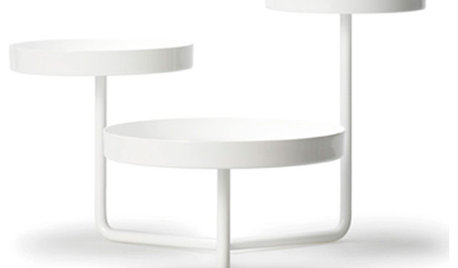Competition coming! Are you up to it?
snasxs
16 years ago
Related Stories

FARM YOUR YARD9 Ways to Change Up Your Vegetable Garden for the Coming Season
Try something new for edible plantings that are more productive than ever
Full Story
DECORATING GUIDESEverything's Coming Up Coral
Red-Orange Accents Give a Home a Beach-Sunset Glow
Full Story
PRODUCT PICKSGuest Picks: Everything's Coming Up Vegetables
Get psyched for those healthy 5 servings a day with veggie-inspired kitchenware, art and accessories
Full Story
ACCESSORIESOn Trend: Up-and-Coming Minimalist Swedish Accessories
Upward-reaching arms worked into these designs make for home decor that's modern but inviting
Full Story0

SHOP HOUZZShop Houzz: Everything’s Coming Up Roses
Renew and refresh with pieces inspired by spring’s classic and elegant flower
Full Story
SMALL HOMESMicrounits Are Coming to NYC. See the Winning Design
Say goodbye to only arm-and-a-leg Manhattan rents. This plan for small prefab units opens the door to more affordable housing
Full Story
TASTEMAKERSSneak Peek: 10 Visionary Designs That Could Be Coming Your Way
Trust the next generation of designers to think ahead — these promising products from the imm Cologne trade fair take innovation to heart
Full Story
HOUZZ TVHouzz TV: First Comes Love, Then Comes a Wildly Colorful Mosaic Home
This couple spent two decades covering their home inside and out with brightly colored mosaic tile, vibrant paint, small toys and more
Full Story
LIFEReading in Bed Comes Out From Under the Covers
No more sneaking a flashlight beneath the sheets. Grown-up bedtime reading deserves grown-up lighting and other bedside amenities
Full Story
PRODUCT PICKSGuest Picks: Company is Coming!
20 ways to spruce up your home in time for visiting guests
Full Story





mike_gee
terrestrial_man
Related Discussions
What surprises did you have come back up?
Q
Resellers or buyers, how do you come up with a fair price?
Q
Can you come up with a better design than my Cabinet Guy?
Q
Are you competitive?
Q
paul_
highjack
cjwatson
richardol
snasxsOriginal Author
xmpraedicta
mehitabel
highjack
toyo2960
jodik_gw
toyo2960
jodik_gw
richardol
mehitabel
jodik_gw
mehitabel
highjack
toyo2960
highjack
snasxsOriginal Author
toyo2960
stitzelweller
jodik_gw
xmpraedicta
arthurm
highjack
toyo2960
xmpraedicta
arthurm
jodik_gw
highjack
olyagrove